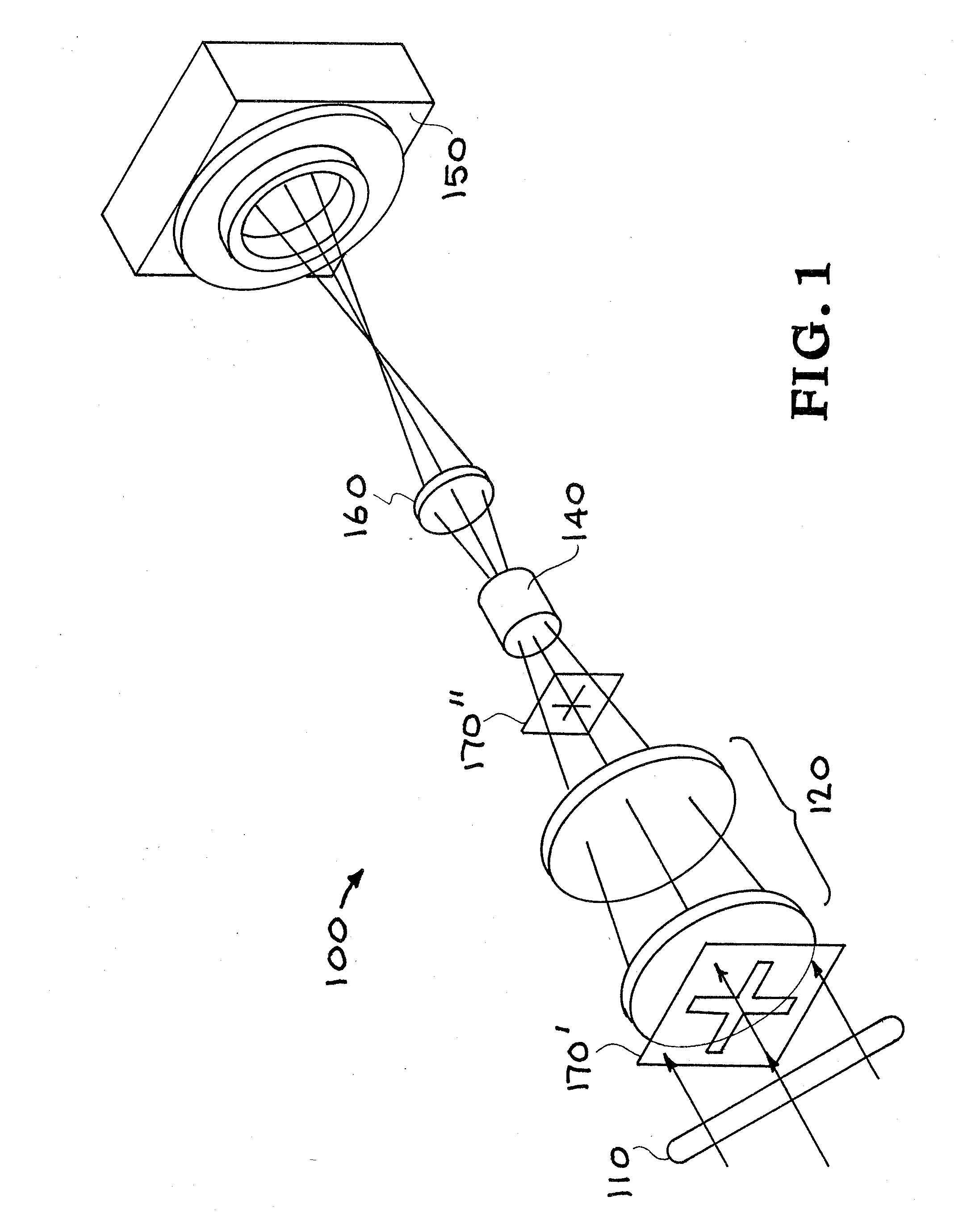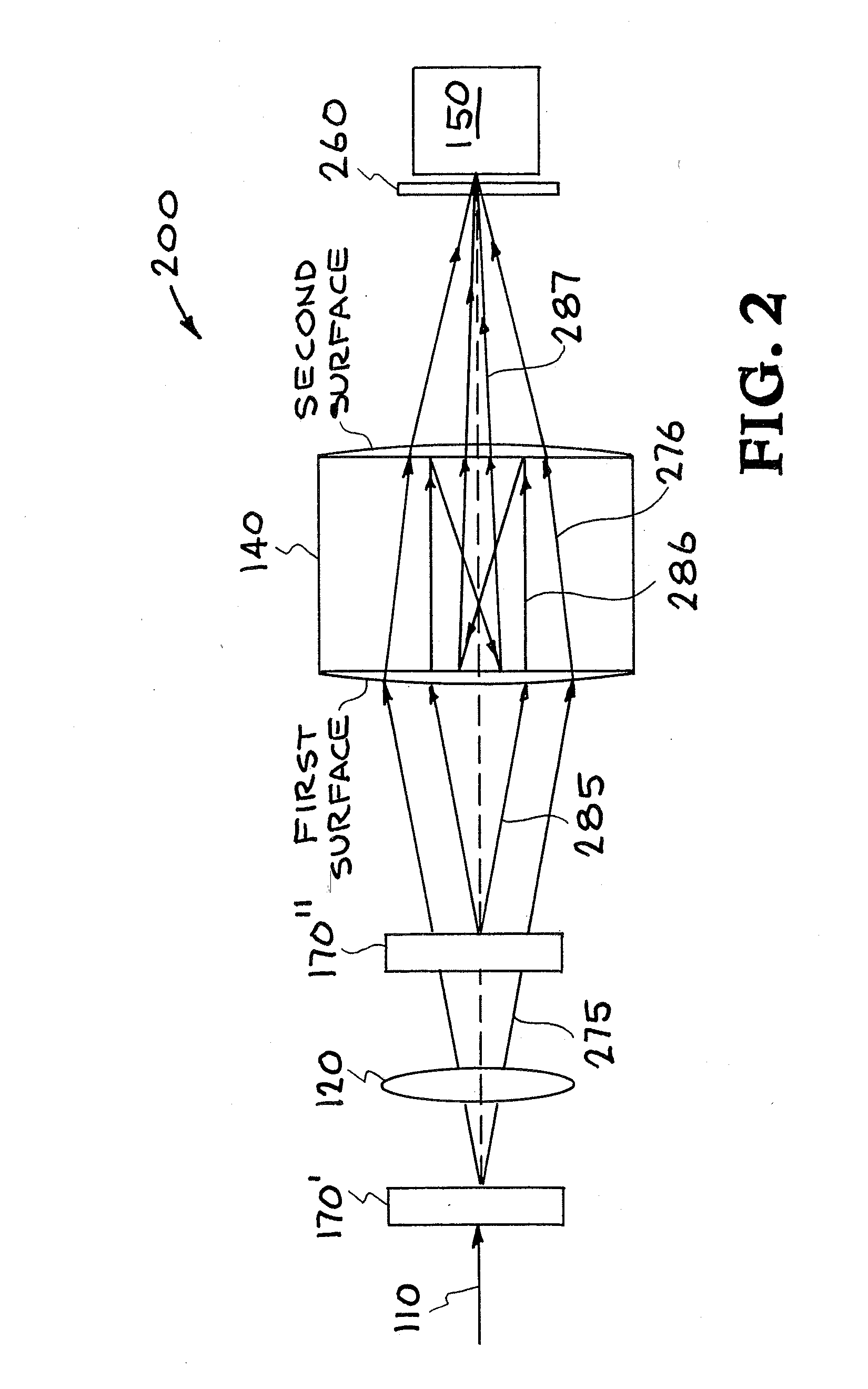Laser beam centering and pointing system
a laser beam and centering technology, applied in the field of compact, non-invasive optical beam alignment systems, can solve the problems of increasing the complexity of the system, reducing the accuracy of the centering and pointing parameters of the optical beam, and limiting the separation distance between the sensors. the effect of minimizing residual centering and pointing errors
- Summary
- Abstract
- Description
- Claims
- Application Information
AI Technical Summary
Benefits of technology
Problems solved by technology
Method used
Image
Examples
Embodiment Construction
[0042]An exemplary embodiment of a basic optical diagnostic system 100 according to the present invention is shown in FIG. 1. An optical beam 110 is incident upon the system. The goal of the system is to determine the centering and pointing parameters of the beam 110 relative to the diagnostic system 100. The system 100 consists of an objective lens 120 (which is a telephoto lens in some embodiments), an upstream reference pattern 170′ and an intermediate reference pattern 170″, with the former pattern situated directly upstream of the objective lens and the latter pattern situated directly downstream of the objective lens. The upstream reference pattern 170′ serves to provide spatial information necessary to enable precise centering alignment of the incident beam 110 with respect to the apparatus 100. The intermediate reference pattern 170″ provides spatial information necessary to enable precise pointing alignment of the same beam. Downstream of the plane 170″ is a bi-focal lens 1...
PUM
 Login to View More
Login to View More Abstract
Description
Claims
Application Information
 Login to View More
Login to View More - R&D
- Intellectual Property
- Life Sciences
- Materials
- Tech Scout
- Unparalleled Data Quality
- Higher Quality Content
- 60% Fewer Hallucinations
Browse by: Latest US Patents, China's latest patents, Technical Efficacy Thesaurus, Application Domain, Technology Topic, Popular Technical Reports.
© 2025 PatSnap. All rights reserved.Legal|Privacy policy|Modern Slavery Act Transparency Statement|Sitemap|About US| Contact US: help@patsnap.com



